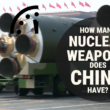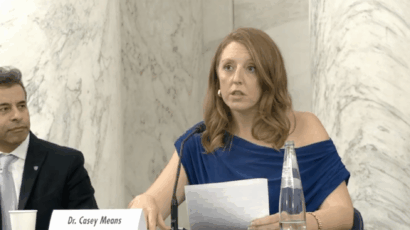Power for non-nuclear nations?
By Rodrigo Álvarez Valdés |
Dictionary definitions of "radical" include "advocating extreme measures to retain… a political state of affairs." This definition nicely describes the behavior of nuclear-armed nations. These countries depend on their nuclear capability as the linchpin of their strategic positioning and practice nuclear radicalism to ensure their continued reliance on nuclear weapons. Nuclear idealists, on the other hand—idealists include many, though not all, of the states without nuclear weapons—view disarmament as an urgent security imperative and an important moral priority. The radicals and the idealists remain permanently at odds, and achieving the disarmament objectives of the Nuclear Non-Proliferation Treaty has come to seem a distant dream.
The two camps, despite their built-in tensions, have cooperated to develop political and technical mechanisms to control and manage nuclear technology. This global architecture has achieved a lot in nonproliferation, in nuclear safety and security, and even in reducing weapons stockpiles—but it has fallen far short of achieving complete disarmament. Even worse, perhaps, it has severely limited the role that non-nuclear states can play in the "nuclear realpolitik" of negotiations toward general disarmament. Relations between nuclear states and non-nuclear states have long been, and continue to be, completely asymmetrical.
The non-nuclear weapon states may have lost their best chance to redress this asymmetry in 1995. That was the year when the Nuclear Non-Proliferation Treaty (NPT) came up for indefinite extension—indeed, the extension was the single most important element of the negotiations that surrounded the 1995 NPT Review Conference. The non-nuclear states had leverage, and they might have used it to compel improvements to the treaty's Article VI, which requires states to pursue negotiations toward disarmament in good faith and at an early date. But Article VI remained unaltered—as flawed as ever. Ever since, countries without nuclear weapons have had cause to look back on 1995 with regret.
Having failed to utilize their leverage then, can non-nuclear states ever play a serious role in disarmament? Can they meaningfully push the nuclear-armed states to disarm—or even force them to do so?
One thing is certain: Non-nuclear states seem to be running out of patience with the established channels of disarmament. An example is the lawsuit that the Marshall Islands filed this year against the nuclear-armed nations, over their failure to disarm, at the International Court of Justice. The problem with the suit is that even if the court rules in favor of the Marshall Islands, it will have no means of enforcing its ruling. And even if sanctions of some sort were imposed on the nuclear radicals, they would probably treat the sanctions as irrelevant to the disarmament process.
What's needed isn't legal action, but rather political action. Only through politics can non-nuclear nations hope to redress the asymmetry that characterizes their relations with nuclear-armed countries.
One way to attack the asymmetry might be to establish a global nuclear-weapon-free zone. Large swaths of the world—Africa, Central Asia, Latin America and the Caribbean, Mongolia, Southeast Asia, and the South Pacific—are already covered by nuclear-weapon-free zones. If these zones banded together, and encouraged the creation of new zones elsewhere, the result would be a new, very large political bloc that, even if it couldn't force the nuclear-armed states to dispense with their weapons, could at least engage in dialogue with them on a much more equal basis. Likewise, non-nuclear nations could initiate a process to amend Article VI of the NPT to make it tougher and more specific. The new language might require that "Twenty-five years after the date of the treaty's indefinite extension, a conference shall be convened to establish a clear process for total nuclear disarmament on a defined schedule."
But when all is said and done, how likely are non-nuclear states to gain control of the disarmament process? How likely are they to compel nuclear-armed states to eliminate their arsenals? In truth, odds are low in both instances. Because nuclear-armed nations enjoy an asymmetry of power over other countries, altering their behavior will be very, very difficult.














